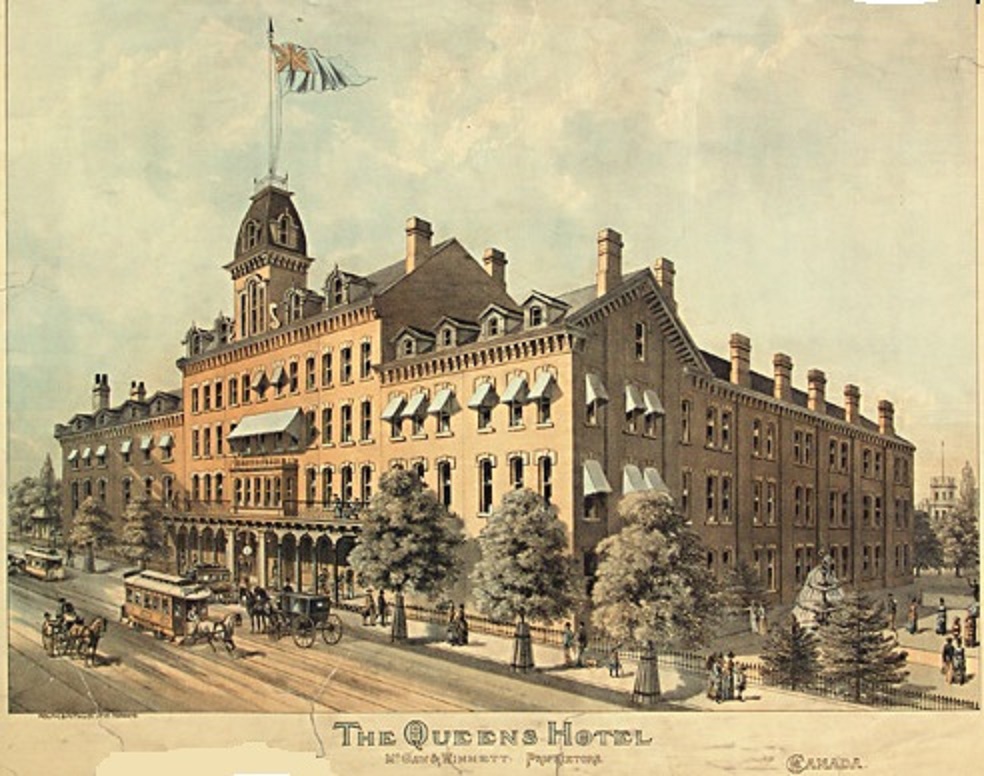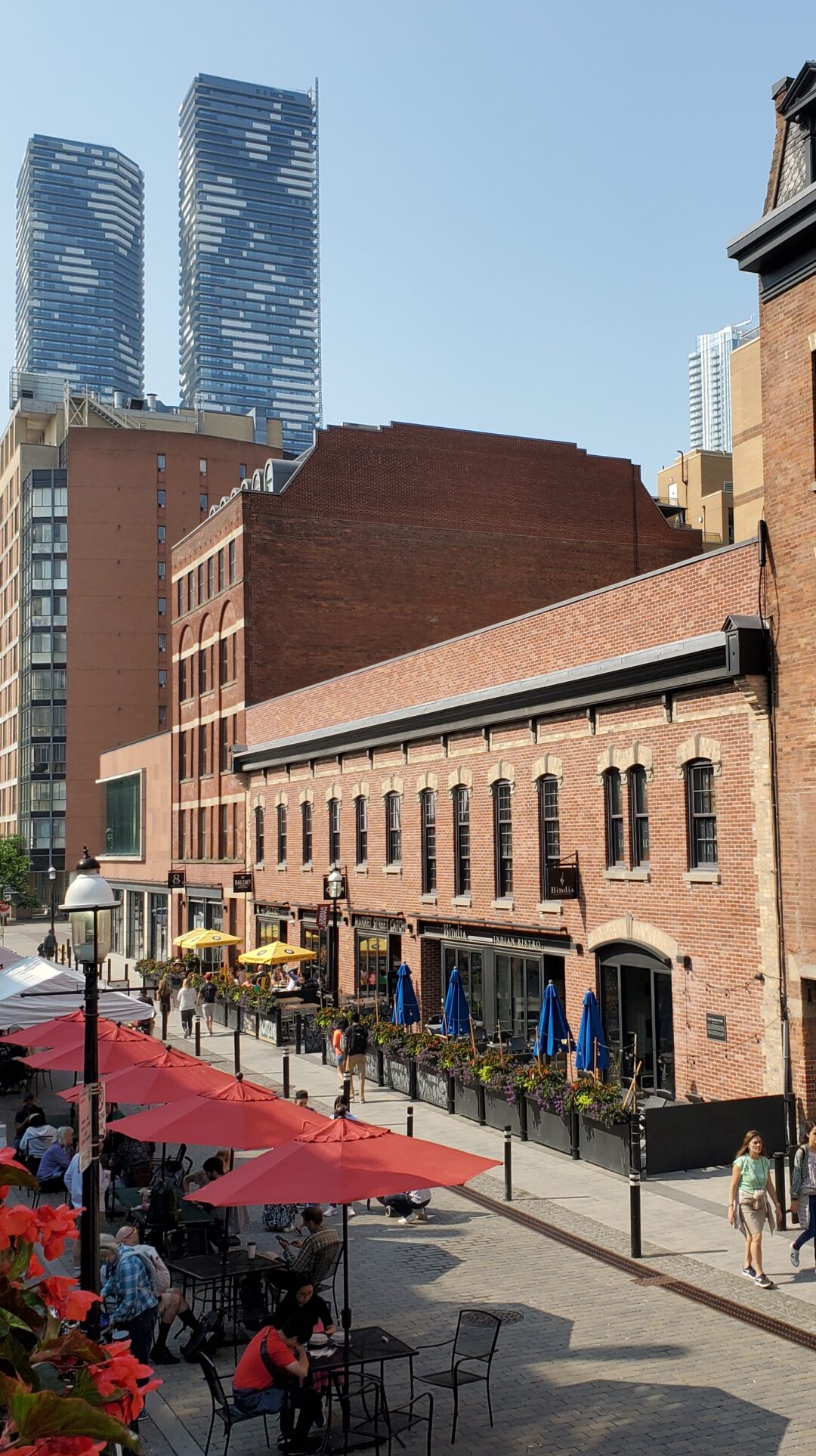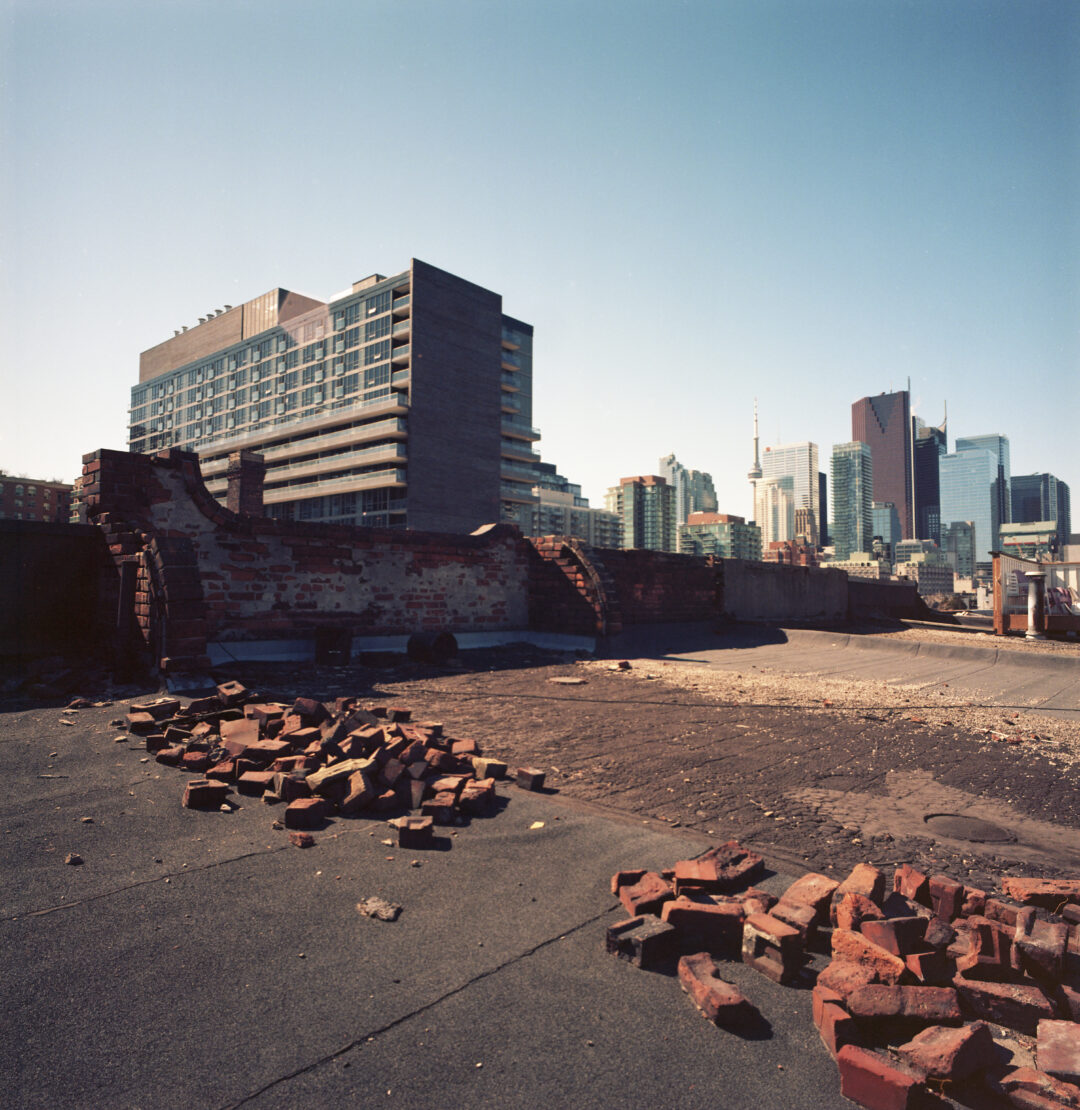By Bruce Bell, History Columnist –
The most famous hotel in York’s early years was Jordan’s York Hotel, first built in 1805, and it stood near where the new Globe and Mail office tower is today on King Street at Berkeley.
If still standing today (it was gone by 1820) it would probably be best described as a boutique hotel with 10 bedrooms and a large public ballroom.
It was in that large ballroom where Parliament sat for a time after the Americans had burnt the Parliament Buildings across the street during the War of 1812.
As the little town of York grew into the city of Toronto our next great hotel was the American Hotel first built in 1840 (demolished 1889) that once stood on Front Street just east of Yonge.
It was at the American that famous 19th century writer Charles Dickens stayed when visiting Toronto in May of 1842.
However, the supreme hotel of 19th century Toronto was arguably the Queen’s Hotel, which at one time stood on Front Street just west of Bay.
There have been various hotels on that site ever since 1842, when a row of town houses was first built for Captain Dick, the operator of the Great Lakes Passenger and Freight Steam Ship Co.
In 1856 Dick partnered with Patrick Sword and the houses were then converted into Sword’s Hotel. In 1862 it was expanded, updated and renamed the Queen’s Hotel and a legend was born.
The Queen’s was the most fashionable hotel in Toronto for almost sixty years and its guest list encompassed the movers and shakers of world history – guests as diverse as the Prince of Wales (later King Edward VII), and Civil War figures Jefferson Davis and William Tecumseh Sherman.
The four-storey hotel had one of the finest dining rooms in the city. It had 210 guest rooms, seventeen private parlours for gentlemen and ladies to entertain at their leisure, a garden and an observation tower in the cupola that was the Queen’s signature architectural feature.
The hotel had been the first in Canada to use hot air furnaces for heating and to have running water in all the guests’ rooms as well as the first hotel in Toronto to use passenger elevators.
As the Great Fire of 1904 was sweeping its way through the downtown core decimating much of lower Bay and Front Streets, the Queen’s was spared partly due to the soaking wet bed sheets hung out the windows by guests to stop the fire from consuming the hotel.
It was gracious, restful, dripping with old world charm and with its umpteenth course dinners served at a red velvet pace, the Queen’s became the centre of Toronto’s social and financial circles.
Part of the Queen’s appeal was, of course, its location, right across the street from the various incarnations of train stations, with the first trains running in 1854.
However, its proximity to the railway would also lead to the Queen’s demise all the same.
During the first part of the 20th century the Canadian Pacific Railway chose Toronto as the location to build the largest hotel in the entire British Empire, the Royal York.
The site selected to build this massive castle-like hotel was the location of the Queen’s. It was just across the street from Toronto’s new Union Station, then and still the busiest train station in Canada.
In February 1927 without any fanfare the Queen’s Hotel, once the jewel in the crown of Toronto’s hotels, was purchased by the Canadian Pacific Railway for one million dollars.
The last person to check out of the Queen’s was long-time resident Charles Bland who, with such a plain sounding last name, was living in the hotel’s most lavish suite the “Red Room”, named for its bold red carpeting and wallpaper. It also was the favoured suite of John A MacDonald.
With Mr. Bland now vacated and demolition beginning in late September of 1927 the name of the new hotel was yet to be revealed.
Most people at the time thought the CPR would keep the name Queen’s Hotel because it was so linked with Toronto’s history.
But in June 1928 the new hotel’s name was revealed to be the Royal York, prompting the Globe newspaper to print a letter to the editor from a reader…
“Why is it necessary to use a new name instead of continuing with the old one which for many years occupied the site and was so well and favourably known.”
As the new Royal York hotel rose like a great pyramid out of the desert it soon became apparent how massive this behemoth was to be with a thousand guest rooms, a 2,000-seat concert hall, a supper club to seat 500 and a lobby almost as big as the entire Queen’s Hotel.
When the Royal York opened on June 11, 1929 there were twice as many employees (1,000) in the new hotel than there were citizens in the Town of York when Jordan’s York Hotel first opened in 1805.
In 1928 with the old Queen’s long gone and new Royal York taking shape, the Toronto Star newspaper published an astute prediction….
“The Royal York will no doubt have many glories in addition to a tunnel from Union Station, but perhaps on the tongues of the tour-guides on the tourist buses it will have no greater fame than this, ‘On this site once stood the great Queen’s Hotel.” As a modern 21st century tour guide I can confirm that pr




